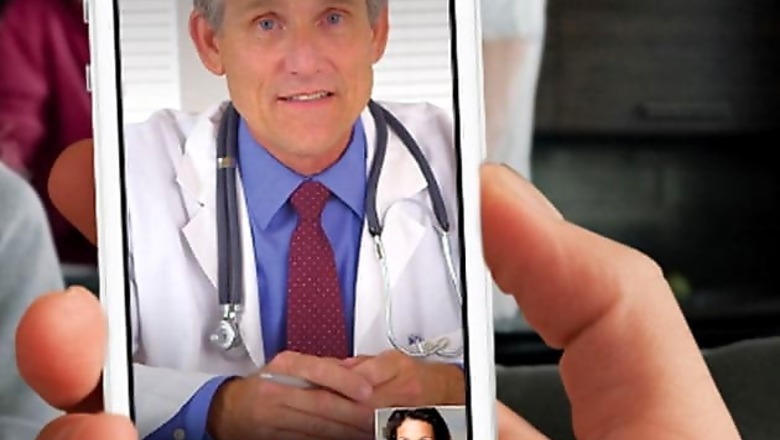
views
San Francisco: HealthTap Chief Executive Officer Ron Gutman believes paying the doctor a visit is expensive and time-consuming. So why not bring the doctor to the patient - digitally?
On Wednesday, the Palo Alto-based startup, which is backed by investor Vinod Khosla, introduced a virtual-consult service called HealthTap Prime. Consumers can opt to pay $99 a month to text or video conference with a physician, online or via a smartphone.
It remains to be seen whether patients will be willing to pay out-of-pocket for HealthTap's service, which is not covered by the largest insurers.
HealthTap faces competition from startups such as DoctoronDemand, which lets patients dial up a licensed physician for $40, as well as technology companies such as Cisco. And given their doctors' inability to take samples, examine patients closely or employ equipment, it is unclear how it can be useful beyond consultation for minor ailments.
HealthTap began as an Internet service for people to ask questions and receive responses from licensed physicians. Since 2010, the WebMD rival claims that 60,000 physicians have registered for the service.
Tele-health, which allows care providers to interact with patients via devices and related digital technology, is an increasingly big business. Research firm IHS forecast that the US market will grow to $1.9 billion in 2018 from $240 million in 2013.
Khosla, who runs Khosla Ventures, recently became an advisor to the company, and argues that HealthTap can compete against more entrenched competitors.
"Innovation almost always comes from outside," Khosla told Reuters. "The largest health systems don't want to disrupt existing business models."
According to Gutman, the HealthTap experience is differentiated by high-definition video and checklists for people to manage their health after receiving a formal diagnosis. It is advertising-free and intends to remain that way.
"We're leaving several million dollars on the table each month by not doing advertising, or selling health data to big pharma," Gutman said.
It can take a few minutes for a patient to connect to a doctor for a live video call, Gutman said. A doctor can then prescribe medication through the company's apps or online site, which patients still have to pick up at a pharmacy.
In recent years, telehealth has received some support in Washington D.C., with both Republicans and Democrats seeing an opportunity to drive down healthcare costs.

















Comments
0 comment